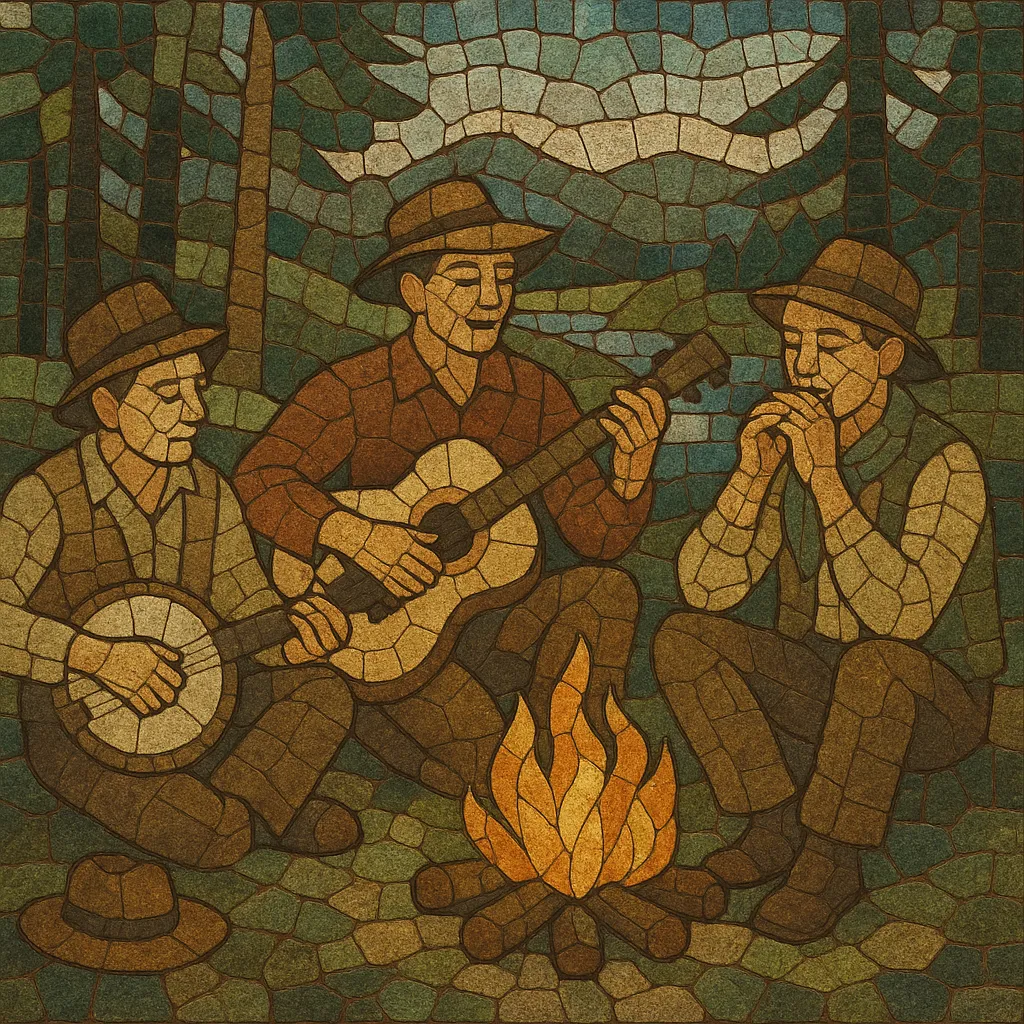
Trampská hudba ("tramp music") is a Czech campfire‑song tradition born from the interwar tramping movement, a homegrown blend of outdoor culture, romantic escapism, and admiration for a mythic American West. Typically acoustic and chorus‑driven, it prizes singability, simple diatonic harmony, and vivid storytelling about forests, rivers, trains, friendship, freedom, and wandering.
Musically it draws on American country and folk idioms while retaining Central European touches such as waltz and polka rhythms. Guitars, banjo, mandolin, and harmonica support unpretentious melodies, often harmonized in two or three parts so large groups can sing together around the campfire. Its tone ranges from cheerful and communal to tender and nostalgic, with a strong do‑it‑yourself ethos.
Trampská hudba emerged alongside the Czech tramping movement after World War I, when youth groups embraced hiking, camping, and a romanticized vision of the American frontier. Early songs adapted American folk and cowboy material into Czech, while new originals captured camp life, camaraderie, and the landscapes of Bohemia and Moravia.
Despite political upheavals and alternating tolerance and scrutiny under the communist regime, the music persisted in informal circles, songbooks, and amateur gatherings. Its acoustic, communal nature allowed it to thrive offstage—around fires, on riverbanks, and at weekend encampments.
A broader folk and country revival brought trampská hudba to stages and records. Bands like Rangers/Plavci, Greenhorns, KTO, and Hoboes promoted the aesthetic, while singer‑songwriters (e.g., Wabi Daněk, the Ryvola brothers) cemented a canon of enduring songs. Festivals such as Porta became key platforms for tramp, folk, and country repertoires.
Following the Velvet Revolution, professional recordings, festivals, and clubs flourished. Although stylistic borders with Czech country, folk, and bluegrass can blur, trampská hudba remains identified by its campfire roots, sing‑along choruses, and nature‑oriented themes, continuing to inspire new generations of performers and hikers.
Trampská hudba helped define a uniquely Czech approach to Americana, filtering country/folk idioms through local language, humor, and rhythm. It nurtured a strong singer‑songwriter culture and laid the groundwork for Czech folk, country, and bluegrass scenes.

